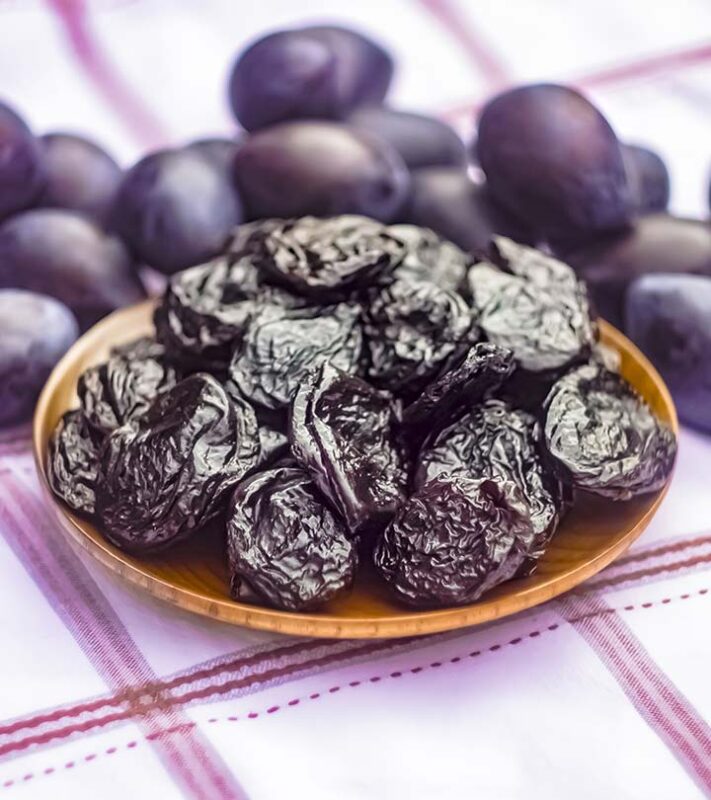Blog
Why are plums called Aloo Bukhara?

Aloo Bukhara is a popular restaurant in New Delhi, India. This restaurant is considered one of the best places for authentic North Indian food. While Aloo Bukhara’s signature dish doesn’t actually involve plums, its name does. Why do you think this dish is called Aloo Bukhara?
Plums, the succulent and flavorful fruits enjoyed globally, have a unique moniker in some parts of the world. In various regions, especially in South Asia, plums are referred to as “Aloo Bukhara.” This name, rooted in history and culture, carries a tale that weaves together languages, trade routes, and culinary traditions.
Linguistic Origins:
The term “Aloo Bukhara” is a testament to the rich linguistic heritage of the Indian subcontinent. In Urdu and Hindi, the word “Aloo” translates to “potato,” while “Bukhara” is an homage to the ancient city of Bukhara, located in present-day Uzbekistan. The name likely found its way into the local lexicon during the region’s historical trade routes and cultural exchanges.
Historical Significance:
Bukhara, renowned for its scholarly pursuits, vibrant bazaars, and agricultural innovations, was a prominent center of trade along the Silk Road. The city’s reputation and its role as a hub for commerce and cultural exchange influenced the naming of the fruit.
As plums made their way from Central Asia to the Indian subcontinent, they brought with them the name “Aloo Bukhara.” The name might have originated from the association of high-quality plums with the city of Bukhara, signifying the fruit’s excellence and desirability.
Culinary Usage:
In South Asian cuisine, especially in India and Pakistan, Aloo Bukhara has become a beloved ingredient. Apart from being consumed fresh, these plums are often dried to make Aloo Bukhara chutneys, pickles, and even desserts. Their tangy and slightly sweet flavor adds a unique dimension to various dishes, enhancing the culinary experience.
Cultural Significance:
The name “Aloo Bukhara” has become an integral part of the cultural and culinary landscape of the Indian subcontinent. It not only reflects historical trade connections but also showcases the adaptability and integration of diverse influences into the region’s rich tapestry of traditions.
The intriguing nomenclature of “Aloo Bukhara” for plums highlights the multifaceted nature of cultural exchange. It is a reminder of the historical interactions between different regions, emphasizing the seamless blending of languages, traditions, and flavors. As we enjoy the delightful taste of plums, let us appreciate the subtle nuances of its name, which echo the echoes of centuries-old connections between civilizations. In every bite of Aloo Bukhara, there lies a story of heritage and the unending journey of flavors across borders and time.
Aloo Bukhara is a famous restaurant in New Delhi, India
Aloo Bukhara is a famous restaurant in New Delhi, India. It is known for its signature dish of potato stuffed with minced mutton and topped with onion rings and green chutney. Aloo Bukhara was opened in 1981 by Kundan Lal Gujral and his wife Sushma Gujral, who had previously owned another famous restaurant called Pasand Haveli (which means “House of Passions”). The original name for Aloo Bukhara was “The Pride Of Punjab”. The name was changed after Kundan Lal Gujral visited Bukhara during one of his business trips to Russia; he liked the food there so much that he decided to change the name so that people would associate it with this city instead.[1]
This restaurant is considered one of the best places for authentic North Indian food.
This restaurant is considered one of the best places for authentic North Indian food. The name “Aloo Bukhara” comes from its signature dish of potato stuffed with minced mutton.
The name “Aloo Bukhara” comes from its signature dish of potato stuffed with minced mutton.
The name “Aloo Bukhara” comes from its signature dish of potato stuffed with minced mutton. Mutton is a type of meat, and potatoes are a type of vegetable, so the name literally means “stuffed potato.” The word “aloo” means potato in Hindi–and it also happens to be one of the most common ingredients in Indian cuisine!
It was given this name because it was thought by the owners that plums were similar to potatoes.
The name Aloo Bukhara is given to plums because they resemble potatoes in their shape and texture. However, the two produce are not similar at all. Plums are not starchy like potatoes and they don’t have the same rounded shape.
A popular Indian dish got its name from the resemblance between plums and potatoes
Plums are a fruit, potatoes are a vegetable. Plums are round and potatoes are not. Plums have a skin and potatoes do not. These differences may seem obvious, but for some reason it took me some time to make the connection between these two foods when I first heard about Aloo Bukhara (or “Potato Plum” in English).
If you’ve ever had this dish before then you probably know that it’s made with plums simmered in tomatoes, onions and spices until they’re soft enough to mash up into a paste-like consistency–but why call it “Potato Plum”? Because of its resemblance to mashed potatoes!
In conclusion, Aloo Bukhara is a popular Indian dish that got its name from the resemblance between plums and potatoes.
Here is a list of 10 frequently asked questions about aloo bukhara fruit:
- What is aloo bukhara fruit?
Aloo bukhara, also known as Indian plum or dried plum, is a sweet and tangy fruit that is commonly used in cooking and baking. It is rich in antioxidants and dietary fiber. - What are the health benefits of aloo bukhara fruit?
Aloo bukhara fruit is known to have several health benefits. It aids in digestion, improves immune function, helps in managing diabetes, and promotes healthy skin and hair. - How can I incorporate aloo bukhara fruit into my diet?
You can include aloo bukhara fruit in your diet in various ways. It can be eaten as a snack, added to smoothies or salads, used as a topping for desserts, or even used in savory dishes like curries or chutneys. - Does aloo bukhara fruit have any side effects?
In general, aloo bukhara fruit is safe to consume in moderate amounts. However, excessive consumption may lead to digestive issues like bloating or diarrhea. It is always best to consume it in moderation. - Where can I buy aloo bukhara fruit?
You can find aloo bukhara fruit at most grocery stores, health food stores, or online retailers. Look for dried aloo bukhara fruit in the dried fruits or nuts section of the store. - Can aloo bukhara fruit be eaten by individuals with diabetes?
Aloo bukhara fruit has a low glycemic index and is considered safe for individuals with diabetes. However, it is always advisable to consult with a healthcare professional to determine the appropriate portion size and frequency of consumption. - How should aloo bukhara fruit be stored?
To ensure the freshness and flavor of aloo bukhara fruit, store it in an airtight container or a zip-lock bag in a cool, dry place. Avoid exposing it to moisture, as it may cause the fruit to become moldy. - Can aloo bukhara fruit be used in baking recipes?
Yes, aloo bukhara fruit can be used in baking recipes such as cakes, bread, muffins, and cookies. Soaking the dried fruit in warm water or juice before using it in baking can help restore its moisture and soften it. - What other names is aloo bukhara fruit known by?
Aloo bukhara fruit is known by different names in different parts of the world. Some common names include Indian plum, dried plum, prune, and damson. - Are there any specific recipes using aloo bukhara fruit?
Yes, there are plenty of recipes that use aloo bukhara fruit. You can try making aloo bukhara chutney, aloo bukhara curry, aloo bukhara smoothie, or even aloo bukhara halwa (a traditional Indian dessert). Search online for specific recipe ideas.




